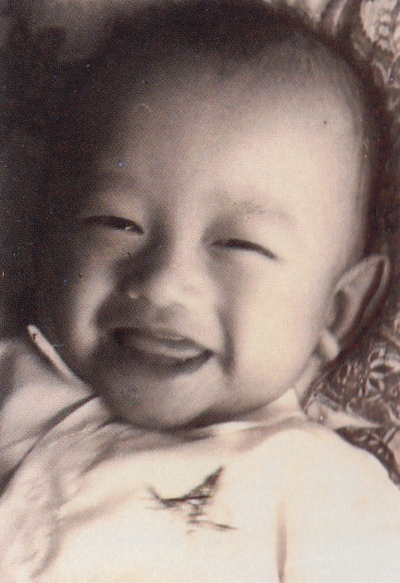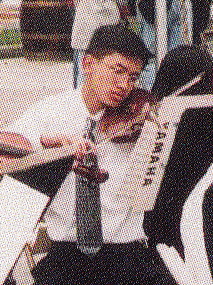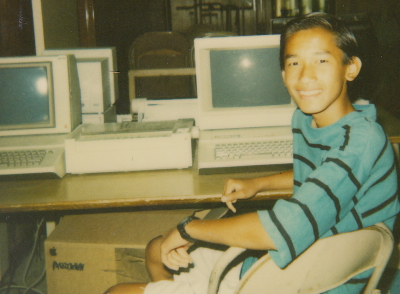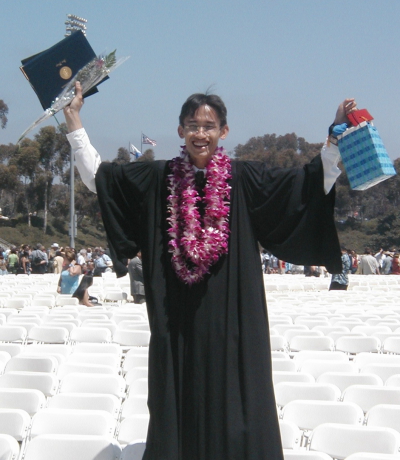Donate!
Please help us on our journey to raise $100 million!
 Barely half a year old, my family left the war-torn country of Vietnam and came to the United States of America. Our family of ten came, like many refugees from around the world, to find freedom and a chance to succeed in an amazing country. This is not a story of my struggles as a newcomer in the U.S., but rather a journey through an education system from being a student to becoming a teacher. I will conclude by sharing with you a new journey from being a teacher to becoming a visionary in education. My journey has been separated into three parts because it is long, and I want to make it compelling enough so that you will join me. Journeys are more fun when you can share that experience with others!
Barely half a year old, my family left the war-torn country of Vietnam and came to the United States of America. Our family of ten came, like many refugees from around the world, to find freedom and a chance to succeed in an amazing country. This is not a story of my struggles as a newcomer in the U.S., but rather a journey through an education system from being a student to becoming a teacher. I will conclude by sharing with you a new journey from being a teacher to becoming a visionary in education. My journey has been separated into three parts because it is long, and I want to make it compelling enough so that you will join me. Journeys are more fun when you can share that experience with others!
From kindergarten to twelfth grade, I was enrolled in eight different schools: four elementary schools, two middle schools, and two high schools. This was the result of moving around eight different times during those thirteen years. It was difficult to develop any comfort in school or maintain any friendship. I just never knew when we were going to move again.
No matter what neighborhood we moved to, my mom was always able to find a good school; however, that school usually was never in our neighborhood. When you’re growing up in a poor immigrant family with a single mom, you’re usually not living in a neighborhood with one of the good schools in town. You don’t need to read a research paper to know that the average housing price in a school district and performance of its schools go hand in hand. In order to attend the better school, we had to either lie about where we lived or, as in the case for high school, be part of a string orchestra (because the local poor neighborhood school didn’t have one). I can’t say that I am proud of what we did, but I wouldn’t be where I am today had it not been for the better opportunities I had at those schools. It allowed me to take many honors and Advanced Placement classes, prepared me to perform better on the SAT, and earned me a spot at a selective university, UCSD.

 Dishonesty came at a cost. We didn’t have a car. The poorer neighborhood usually was across the city from the wealthier neighborhood. This meant that we had to take the city bus across town each day to get to school. In elementary it took an hour to get to school by city bus; in middle school, it was over an hour and two city buses; in high school, it was one and a half hours taking two buses. That meant waking up at 4:45am, catching the bus at 5:15am, transferring to another bus at 5:50am, getting to school by 6:45am, walking another 10 minutes, and finally attending my first class at 7:00am. That was string orchestra. Before enrolling in that high school, I never held a violin. My mom told me I had to learn how to play it because that was the school I was going to be attending; there was no choice in the matter.
Dishonesty came at a cost. We didn’t have a car. The poorer neighborhood usually was across the city from the wealthier neighborhood. This meant that we had to take the city bus across town each day to get to school. In elementary it took an hour to get to school by city bus; in middle school, it was over an hour and two city buses; in high school, it was one and a half hours taking two buses. That meant waking up at 4:45am, catching the bus at 5:15am, transferring to another bus at 5:50am, getting to school by 6:45am, walking another 10 minutes, and finally attending my first class at 7:00am. That was string orchestra. Before enrolling in that high school, I never held a violin. My mom told me I had to learn how to play it because that was the school I was going to be attending; there was no choice in the matter.
The time and effort it took to travel to school was not the greatest cost. Constantly being afraid that you would be discovered was a cost that was close to unbearable. I was told to do well in school, stay out of trouble, keep a low profile, don’t let anyone know where you live, and respect all adults at school. However, my mom didn’t tell me not to get sick. One day in third grade, I was so sick that I was told to go home. Since we didn’t have a car, I told the school I would have to take the bus home. The principal decided to drive me home. That was the last day I attended the school across town. We were discovered. Luckily, this happened only once.
 The differences between a poor school and a wealthy school were night and day. Wealthy schools had access to a wider array of resources, including computers (which was a rarity back in the 80s), large libraries, parent volunteers, donations from local families, school supplies, sports equipment and fields, and better infrastructure. In addition, the wealthier schools were also surrounded by safety. Leaving school, especially in the early evening after a school event, was not a problem. I felt safe in school and outside of school. In addition, at school you rarely heard about theft or saw vandalism that occurred overnight.
The differences between a poor school and a wealthy school were night and day. Wealthy schools had access to a wider array of resources, including computers (which was a rarity back in the 80s), large libraries, parent volunteers, donations from local families, school supplies, sports equipment and fields, and better infrastructure. In addition, the wealthier schools were also surrounded by safety. Leaving school, especially in the early evening after a school event, was not a problem. I felt safe in school and outside of school. In addition, at school you rarely heard about theft or saw vandalism that occurred overnight.
The contrast that stood out the most about a better school was the academic culture. Teachers expected students to do well. Students expected each other to do well. In fact, doing well was “cool.” You wanted to do well to meet the teachers’ expectations, and more importantly you wanted to do well to “fit in.” “Peer pressure” has its upside!
After high school, I went to college to become a cardiologist, not a teacher. However, observing the death of several family members and others in my life, I didn’t want to be around such a morbid environment later in my career. Someone’s life under my scalpel was too much responsibility for me. My major in cell biology and biochemistry turned into a major in art. After a few semesters, I didn't like the direction of the art program department. I settled on a minor in art and a major in management science (hoping to go into investment banking because I love numbers). After a few days at a local investment banking firm, I realized that environment was also not for me.
 What do I do now? With only one year left of college, I needed to make a decision. At that time, I was going into my sixth year of college, and for three years, I had been teaching swing dance at UCSD. I realized that it was something that brought a lot of joy to my life. The most logical decision was to go into teaching math! I completed an additional minor in teaching, and a year after completed my master’s in education. I was ready to make a difference in teenagers’ lives!
What do I do now? With only one year left of college, I needed to make a decision. At that time, I was going into my sixth year of college, and for three years, I had been teaching swing dance at UCSD. I realized that it was something that brought a lot of joy to my life. The most logical decision was to go into teaching math! I completed an additional minor in teaching, and a year after completed my master’s in education. I was ready to make a difference in teenagers’ lives!
You won't believe what happened at the beginning of the school year! To be continued...

